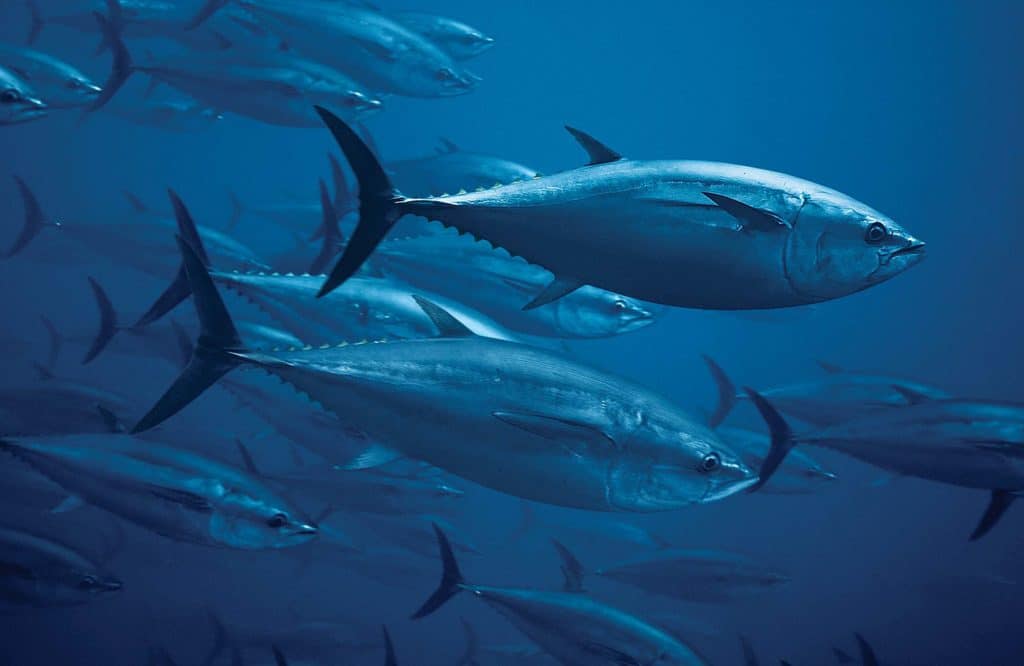
It is estimated that some 85 percent of global commercial fish stocks have been pushed to, or beyond, their biological limits. Illegal, unreported and unregulated fishing is a large component of the problem and wields significant fisheries and socioeconomic impacts the world over.
For those not familiar with the concept of IUU, the explosion of so-called tuna ranching in the Mediterranean in the early 2000s provides a good example. In this case, large numbers of bluefin tuna were captured by net — often during or after spawning events — but, rather than being landed and accounted for, were transported to floating cage operations. The premise was to keep them in captivity and feed them, which would not only increase their overall weight but also the condition of their flesh, fetching commercial anglers more money per fish. The problem was that many of these tuna caught for ranching operations went unreported. This resulted in a shell game that made it very difficult for fisheries managers to calculate total landings. The problem got so bad that reported landings were exceeded by as much as 19,400 tons in 2006 and 28,600 tons in 2007.
Fortunately, ICCAT ultimately got a handle on tuna ranching. IUU landings for eastern bluefin tuna have decreased, and the stock is rebuilding. The bad news is that IUU continues to be a major international problem. A study published in 2009 estimated that the global revenue stolen from IUU fishing totals somewhere between $10 billion and $23 billion annually. The magnitude of this lost revenue can have significant negative impacts to fishing communities at the regional level.
Transparency is generally a good thing. Opaqueness is not, especially when it comes to fisheries traceability. Unfortunately, many current processes employed to determine chain of custody for seafood products are far from transparent and mar managers’ ability to track fish from location of capture to the consumer’s plate. This also makes it very difficult to determine how and how much illegal product enters the marketplace.
According to a paper published in 2014, somewhere between 20 and 32 percent, the equivalent of $1.3 billion to $2.1 billion, of wild-caught seafood the United States imports is illegal. Seafood consumption is big in the United States and is second only to China, with Americans consuming 2.1 million tons in 2011. The United States also typically ties with Japan as the world’s largest importers of seafood, which accounts for roughly 13 to 14 percent of the global total.
Read Next: 2017 ICCAT Meeting Results
That same study ranked the top 10 exporters to the United States and revealed that tuna was the top wild-caught product for half of them. Tuna enters the United States as canned product or as fresh or frozen tuna species. Most of this comes from the Pacific and Indian oceans. However, the supply chain leading to tuna entering the United States is incredibly complex and includes brokers, wholesalers, traders and other middlemen that stand between the fisherman and the consumer. For example, 70 to 85 percent of tuna processed in China (one of the biggest exporters to the United States) is of foreign origin, making it very difficult to determine how much of the 14,000 tons exported to the United States is IUU. In total, this study reported that more than 80,000 tons of tuna imported into the United States from the top 10 exporters in 2011 were likely a product of illegal, unreported and unregulated fishing.
But, there is some good news on the horizon. The United Nations Agreement on Port State Measures and Interpol’s Project Scale initiative may be turning the tide on how much illegal tuna ends up on your dinner plate.







